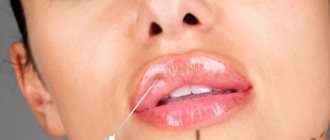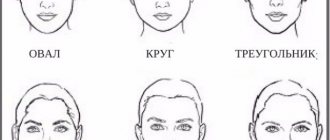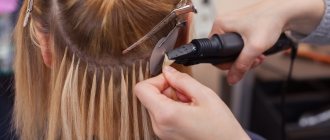What is hair transplant?
Hair transplant is a surgical process that involves transplanting hair follicles into areas where hair has become balding. Hair transplant is a surgical process that aims to permanently treat hair loss. Donor hair, which is genetically resistant to hair loss, is usually collected from the back of the head and the side of the ear.
If there is not enough hair in these areas, it can be collected from other areas such as legs, chest, beard. Hair obtained from another person is not transplanted. The method is usually used to eliminate aesthetic problems, and therefore belongs to the field of aesthetic and plastic surgery.
Hair loss: causes, prevention methods and treatment
Video
Hair transplant in detail
Dermatologists became interested in the problem of hair transplantation almost 200 years ago. A lot of techniques were tried, but with the invention of hair transplantation using the seamless method
At the end of the last millennium, a kind of revolution took place in the world of aesthetic medicine.
FUE hair transplant
(seamless) made it possible to minimize trauma to the scalp used as a donor area.
In addition, this technique is suitable for collecting follicular units from any part of the patient’s body. In a seamless hair transplant,
the material is extracted using special rotating extractors, so the damage to the skin is minor and soon heals without the formation of seams.
The advantages of the FUE method are undeniable:
- minimal trauma;
- absence of postoperative suture;
- fast recovery;
- minimal risk of complications;
- natural look and hair growth;
- lifelong relief from baldness in this area;
- collection of follicular units from any zone;
- Possibility of use on scar tissue;
- application for restoration of eyebrows and eyelashes.
There is only one noticeable drawback to seamless hair transplantation: prices
it is slightly higher than for transplantation using the traditional strip technique.
Why is hair transplant performed?
Hair transplantation is used to solve the problem of regional baldness, which worsens with hair loss. This can also be done in the area of eyebrows, beard and mustache
Who can get a hair transplant?
This procedure can be performed on healthy men and women aged 20 to 75 years who have the following problems as well as congenital regional hair loss:
- Androgenetic alopecia (genetic hair loss)
- Scar from burns or injury
- Facelift, brain surgery, etc.
- Past infection
- Excessive hair stretching (tracing alopecia)
The most important requirement for the procedure is that the person undergoing hair transplantation has enough donor hair to cover the areas that have gone bald.
Hair transplant is contraindicated for those who are suffering from chronic and serious diseases such as hypertension, diabetes, kidney failure and ringworm, etc. People undergoing chemotherapy are also contraindicated for hair transplant.
Donors for transplantation
According to the Institute of Transplantology, every person can become a donor for organ transplantation. For persons under eighteen years of age, parental consent is required for the operation. When you sign a consent to donate organs after death, a diagnosis and medical examination is carried out to determine which organs can be transplanted. Carriers of HIV, diabetes mellitus, cancer, kidney disease, heart disease and other serious pathologies are excluded from the list of donors for organ and tissue transplantation. Related transplantation is carried out, as a rule, for paired organs - kidneys, lungs, as well as unpaired organs - liver, intestines, pancreas.
Causes of hair loss
Hair loss can develop for many reasons. Of these, the most important are:
- Genetic factor
- Hormonal (especially testosterone deficiency) factor
- Menopause
- Pregnancy
- Stress
- Poor nutrition
- use of certain medications
- Diseases
- Environmental factors
Mesotherapy: procedure, types, benefits and side effects
How is hair transplant performed?
- To determine the transplant area, you need to conduct a hair analysis. In order for the hair to subsequently look natural, a new hairline and the required amount of graft are determined.
- The areas where the graft is being harvested are given local or sedative anesthesia.
- To prevent the development of infection, the scalp is thoroughly cleaned with a special preparation.
- The grafts collected from the transmitter area are kept in a special solution.
- The transplant area is numbed with anesthesia
- The grafts are placed in open canals.
How long does a hair transplant take?
This operation is considered an outpatient treatment and generally does not require inpatient monitoring. Typically the process takes 6-9 hours. This period may vary depending on the number of hair follicles and the method used.
If the transplant is planned for a large area, then 2 or more sessions may be required.
Is hair transplant a painful procedure?
No pain is felt since both the donor and recipient areas are numbed with local or sedative anesthesia during hair transplantation.
Body hair transplantation
For men planning to undergo hair transplantation, body hair is considered as a third source of recipients. If the grafts are extracted from the back of the head and beard area and the amount is still insufficient for coverage, among other options, chest hair can be considered as a good alternative source of hair follicles for hair transplantation. There are two main reasons why body hair is considered as a 3rd additional source of donor in hair transplantation. The first reason: body hair grafts, especially chest hair, have a similar structure to, for example, a beard; they are thick and contain one or two hairs. As for the second reason; because the anagen phase of body hair is much shorter; body hair grows shorter. Hair grafts obtained from the ribcage cannot be used for hair restoration on the front of the scalp.
Patients have achieved natural, successful and satisfactory results with "Hair Transplantation" at Dr. Serkan Aygin's clinic. If you are considering a hair transplant or would like more information about hair transplantation, do not hesitate to contact us.
Hair transplant methods
There are 2 main methods for collecting hair from the transmitter area:
- Follicular Unit Transplantation (FUT)
- Follicular Unit Extraction (FUE)
The name of the first hair transplant method comes from the English word strip - strip, flap.
FUT (Follicular Unit Transplantation)
The graft is introduced and removed using incisions. A flap of skin is removed from the occipital region, it is cut and divided into parts (grafts) containing a small group (from one to four) of hair follicles. It is these grafts that are transplanted into problem areas. The operation is carried out in several stages.
FUT Hair Transplantation: Procedure, Benefits, Risks and Price
- First, the surgical field is prepared in the occipital region.
- If necessary, the hair is cut to a length convenient for removing the flap.
- Then the flap is determined and marked, and local anesthesia is administered.
- After simple manipulations with a scalpel, the wound is carefully sutured.
- The removed strip is “split” into grafts, which are implanted into previously prepared canals.
- On average, such an operation lasts 3-4 hours, after which a two-week rehabilitation period is required, but the patient can leave the clinic on the same day.
- One of the main advantages of the method: the seam at the back of the head will be covered with hair, and the graft insertion sites will be visible for a maximum of 10 days.
- Another advantage of the technology is that a large number of grafts can be transplanted in one operation.
The patient will be able to start working the very next day after the operation.
However, over the next three weeks you will not be able to visit the bathhouse or solarium, actively engage in sports or lift weights.
Stages of embryo transfer
Observing signs of heat
Effective embryo can be subject to two factors: it is important to choose the optimal time for transplantation correctly, and the synchrony of the reproductive cycle of both the donor cow and the recipient cow is also important. Therefore, it is very important to monitor signs of hunting.
Observation of signs of hunting is carried out daily, at least 3 times. The date, time and number of the cows and the heat stage of the cows are recorded. The sexual cycle in cows from the start of heat to the start of the next lasts on average 21 days, but can vary between 18 and 24 days. In heifers, the sexual cycle lasts on average 20 days. The duration of active sexual hunting is approximately one day. The pre-flow phase lasts about 3 days and the post-flow phase lasts 2-3 days. The development of the corpus luteum lasts about 14 days and the phase of its development falls in the period between the post-estrus and the next pre-estrus.
Signs of heat
1. Readiness for mating - a clear sign of active heat is a period characterized by the immobility of the cow, when another cow climbs on her. 2. Changes in the behavior of the animal - activity increases, milk production decreases significantly, severe anxiety appears, which is expressed in mooing and seeking contact with other animals, and climbing on other cows occurs. 3. Mucus secretion - swelling of the genital organs and hyperemia of the mucous membrane of the external genitalia . At the beginning of the cycle, the mucus has a thick and sticky consistency, sometimes the mucus is blue-gray in color. Within two days, the mucus becomes more transparent and its quantity increases. On the day of ovulation, the mucus becomes clear and liquid. The mucus is viscous and can be stretched between two fingers like a spider's web. After ovulation, the consistency of the mucus changes and it again becomes sticky, thick and its amount decreases.
FUE method
The second (FUE) method differs from the previous one in being less traumatic.
- Hair bundles containing 1–6 follicles are removed from the donor area. This is done using a special machine (hence the name of the technique) with a rotating punch.
- As a result, small scars with a diameter of about 1.5–5 mm (according to the diameter of the punch) remain in the area.
- They heal faster than a large strip scar, but also remain visible for life.
- The removed bundles are divided into grafts and cleared of damaged follicles, because With this method of sampling, the loss of follicles can be up to 70%.
- Graft transplantation is performed using a scalpel and tweezers, as with the strip method, and also does not provide the natural thickness and slope of the hair.
- The density of grown hair is 40–60 units per cm2.
FUE hair transplant: methods, benefits and prices
Nevertheless, the ability to streamline hair transplantation through the use of machines makes the FUE method quite popular at the moment. However, all the disadvantages of the previous method can be observed in this case, although to a slightly lesser extent.
Hair follicles are removed without incisions, and they are inserted into the skin surgically. The main stages of the operation are similar to the patchwork method discussed above, but there are also differences.
In particular, the doctor can take follicles not only from the back of the head, but also from the scalp, arms and back. This makes it possible to transplant a larger number of grafts, which allows you to achieve the greatest hair density.
The combined method is less invasive, the incisions are much smaller, therefore, the operation is easier, and rehabilitation is faster and with fewer complications. The rehabilitation period is no less than two and no more than four weeks. Despite the fact that the patient does not experience discomfort or severe pain during the procedure, in most cases the use of painkillers in the first two to three days after surgery is strictly necessary.
The advantages of seamless hair transplantation are due to:
- Absolute absence of scars after surgery
- Self-healing of microholes
- Accurate calculation of the number of grafts and hair follicles with a uniform structure
- Preserving the natural rate of hair growth and its characteristics
- Low invasiveness
- A short period of rehabilitation of the body.
FUE Method using Micromotor (classic method)
In the classic FUE technique, cuts are created by using steel blades. With these slotted blades, cuts must be made with great precision, taking into account the natural direction of hair growth. This will allow the transplanted grafts to grow in a natural direction. When making gaps in the recipient area, it is very important to follow the direction of the existing hair in that area.
FUE technology uses steel blades to make cuts in the recipient part. During surgery, after hundreds of cuts have been made, these steel knives must be replaced with new ones.
Robotics FUE
A plastic surgeon with high qualifications and extensive experience in the field of hair transplantation will be able to work with the device. However, the device takes over and performs at an extra-class level such stages of the operation as the collection of grafts and the preparation of micro-holes for graft transplantation.
The robot creates 3D images of the donor and recipient (bald area) areas, analyzes the density of hair growth and extracts hair follicles for subsequent transplantation. The robot calculates exactly how many grafts can be used on a specific donor site in order to maintain the natural thickness of the hair thereafter. The process of collecting grafts for subsequent transplantation occurs quickly and efficiently.
This unique device scans the hair for melanin pigment, tracks the depth and angle of growth and extirps the follicle in an ideal form for transplantation. Meanwhile, the surgeon sets the parameters for the direct transplant: the direction and angle of growth of the new hair, the density of the incisions. Then the robot starts working again.
According to the program established by the doctor, the robot is capable of preparing up to 1,500 micro-holes per hour, which is several times faster than with a classic transplant. And the shorter the time that the extracted follicles stay outside the body, the more efficiently and quickly they will take root in a new place.
What is inflammation? Causes, symptoms and treatment
Thus, the robotic transplant method will help perform complex transplant operations several times faster and more efficiently.
DHI method
The doctor removes the hair follicles one by one using a special very small instrument (0.7 to 0.9 mm in diameter). Extraction is performed in the lateral and occipital areas, which are not susceptible to genetic factors. The DHI method is often confused with FUE, but in fact there are some differences between the two methods.
This method is also known as the canalless transplant method. This is done using a sharp, feather-like tip known as a Choy Needle. The hair roots collected from the transfer area are placed in a hopper inside the instrument and planted directly with special ends without opening any hole in the area where the hair will be transplanted.
This way they are minimized while the grafts are on the outside, allowing them to remain stronger.
Sapphire FUE
Technological advances that we see every day have contributed to the development of new, innovative hair transplant methods, as well as the treatment of hair loss.
Hair transplantation, which has progressed and evolved over the years to become a well-established and minimally invasive surgical procedure, has taken its final form in line with the more effective use of new medical devices.
The FUE method, which is considered one of the most modern and widely used methods of hair transplantation, providing natural results, has become even more successful thanks to the use of special devices with sapphire blades.
There is also the Gold Technique, in which the devices used in hair planting are made of gold.
Hyperbaric FUE
Once the process is completed in this method, the patient receives hyperbaric oxygen therapy. The patient breathes pure oxygen for a while, increasing the oxygen level in the blood. Oxygen therapy is designed to restore hair follicles faster.
Laser FUE
Laser FUE (laser-assisted hair transplant surgery) is the opening of canals in the transplant area using a low-density laser beam. Thus, blood circulation under the skin increases, increasing the likelihood of hair follicles adapting. Bleeding does not increase as the blood vessels clot during the transplant.
What is Botox? When and how is it used? Is it dangerous?
Laser FUE is not a widely used method and experts have different opinions about it. The main criticism is that it is claimed that the laser beam does not increase blood circulation, but burns and damages the blood vessels, and there is a possibility that the adaptation of the hair follicle will be low.
Laser hair transplant
Laser hair transplant is a combination of surgery known as low level laser or cold laser.
The main purpose of using laser after hair transplant surgery is to speed up wound healing, quickly reduce side effects such as bloating, redness, pain and help achieve results quickly.
It also reduces the pain during the healing process of scabs that occurs after hair transplant surgery.
There is no side effect such as burning sensation in this laser application because the source does not generate heat.
We use a low intensity laser device to treat hair loss.
To do this, when the device is applied to the scalp twice a week for 20 minutes, it first stops hair loss. With prolonged use, hair thickness increases.
When a certain improvement is achieved, you can continue with decreasing sessions once a week.
Serkan Aygın Clinic has a low-level laser application suitable for clinical use.
This is an important medical practice that, in previous scientific studies. has been shown to have therapeutic properties for genetic hair loss in both men and women.
The mechanism of action of ATP in the cell increases the level of nitric oxide.
This ensures hair strengthening.
Additionally, it is observed that by reducing the accumulation of DHT, it reduces the factors effective for hair loss and thinning.
The laser beam, which is suitable for medical use, is directed at the scalp at low energies. This nourishing laser light stimulates the hair follicles, the root structure of the hair.
It reduces hair thinning and helps your hair regain its natural growth cycle.
With more complete and intensive care, it promotes hair growth.
Laser hair treatment has been approved by the FDA. The laser device we use in our clinic consists of 5 modules, each of which powers 364 sources. Our app has 6 different therapeutic frequencies and can be customized according to the patient's specific situation.
Benefits of FUE technology
- Hair transplantation can result in a more natural and dense appearance of hair.
- This is an excellent solution for treating moderate to severe hair loss.
- It is a comfortable technique that is designed to provide patients with the least amount of discomfort without leaving external scars.
- FUE hair transplant technology offers patients faster recovery time; They can return to their daily routine and travel the day after the procedure
- With the right work plan, there will be no damage to the donor area and no changes in appearance even after several operations.
- 98% of transplanted grafts will grow as normal hair.
Hair transplantation at the clinic of Dr. Serkan Aygin
Dr. Serkan Aygin Clinic is a renowned hair transplant clinic in Turkey that performs hair transplant procedures and offers hair loss treatment to patients from all over the world.
For 22 years, Dr. Serkan Aygın and his operating staff have only performed hair transplant procedures and offered hair loss treatments. Features of the work of the doctor and the clinic; High level of specialization and expertise in the field of hair restoration, attending international conferences as both a teacher and participant and performing hair transplant procedures for people from over 50 different countries.
What are the keys to success with FUE?
We believe that the most important success factors are:
Experience
24 years of experience performing hair transplant procedures on thousands of patients has given us extensive knowledge in understanding the needs of our patients.
Extensive experience gives us the opportunity to choose the right solution for our patient and better apply the FUE technique.
Professionalism
Hair transplant surgeries should only be performed by specialized doctors. People may have different health conditions and hair loss conditions; a specialized doctor can examine and make the correct diagnosis. As a dermatologist, Dr. Serkan Aygın can determine a patient's suitability for surgery, taking into account their various hair loss conditions and provide them with all the detailed instructions on what to do or avoid before, during and after the surgery. The specialist will care about the health of his patients, and not just about the final result of their transplant procedure.
artistry
For a successful and natural-looking hair transplant result, the hairline design must be natural and compatible with the patient's facial shape and appearance. This requires experience and aesthetic understanding.
Understanding the Patient
The starting point of the operation is a medical examination. At this stage it is important to understand the patient in order to conduct a needs analysis and develop a good work plan. At Dr. Serkan Aygin Clinic we always act in accordance with these principles.
Additional Sources That Increase Hair Transplant Success
For people suffering from hair loss, hair transplantation may also require other sources. For example, if the donor hair that occurs at the back of the scalp is not sufficient to cover all areas of baldness, the likelihood of a successful hair transplant is unlikely. For this reason, in order to be able to perform a more successful hair transplant operation, it is also possible to use grafts from different parts of the patient's body.
Advantages of the FUE technique
The advantages of seamless hair transplantation are due to:
- absolute absence of scars after surgery; independent healing of microholes;
- accurate calculation of the number of grafts and hair follicles with a uniform structure;
- maintaining the natural rate of hair growth and its characteristics;
- low invasiveness;
- a short period of rehabilitation of the body.
When does hair start to grow after transplantation?
After 3-6 months, new hair begins to appear normally. The exact result is observed after approximately 12-18 months.
Recommendations for hair transplant
A transplant is a major surgical procedure. To minimize risks, all details must be examined very carefully by both the surgeon and the hospital. Experience, the surgical team, the medical devices used, hygiene and hospital conditions are extremely important for the success of this procedure.
Before hair transplant
When deciding to undergo hair transplant surgery, you should pay attention to the following details:
- You should not smoke or drink alcohol or caffeine drinks 1 week before surgery.
- If you are taking medications for heart, diabetes, or blood pressure, be sure to tell your doctor.
- Anti-clotting drugs such as aspirin should not be taken 2 weeks before surgery; Do not take multivitamins containing vitamin B and vitamin E as they may increase bleeding for up to 1 week.
- It is necessary to wash your hair before surgery and do not use gels or other chemical products.
- It is important to eat a large meal before surgery as hair transplantation is a lengthy process.
- If the operation is performed under anesthesia, you must come with someone close to you who will pick you up from the clinic, as the effect can last 24 hours.
- On the day of surgery, wear clothes that fasten with buttons or a zipper, such as a cardigan or shirt.
After hair transplant
You must be very careful for 15 days after surgery until the planted hair roots are fixed in their new places. Follow a few rules:
- Do not wash your hair for three days and avoid getting it wet, especially in the areas where hair grows. Gently rinse your hair with your fingertips using the shampoo and lotion your doctor recommends. Your doctor will do this the first time.
- After washing, lightly dry your hair with a towel; try not to use a hair dryer. If you must use it, do not place the hair dryer too close to your head and do not use hot air.
- Avoid sports such as football that will hit the head area.
- Use a small pillow to avoid damaging hair follicles. Lie on your back as much as possible.
- Try wearing clothes that button up for a while. The graft area may become damaged when you remove clothing such as a sweater.
- You can use a hat to protect your hair from external factors such as sun, rain, dust.
- Avoid going to the beach, sauna or sauna.
- Typically, peeling in the hair transplant area ends within 10 days. If it lasts more than 15 days, contact your doctor.
Suitability for transplantation
Stem cell transplantation is best tolerated by younger people and patients who have just started treatment. Some transplant centers set age limits. For example, traditional allogeneic transplantation (there are several types of this procedure) is often offered only to patients under 50 years of age, and autologous transplantation to patients under 65 years of age. Stem cell transplantation may be contraindicated if you have severe heart, lung, liver, or kidney disease. Some of these patients are given what is called a mini-transplant.
Treatment at the Ikhilov Cancer Center without leaving your home.
How clinic specialists treat patients during coronavirus.
Find out details
Treat yourself at the Ikhilov Oncology Center without leaving your home.
How clinicians care for patients during the coronavirus crisis.
Find out the details











